Fr. Elmar Busse •
If one approaches the publications about Fr. Joseph Kentenich with methods of qualitative content analysis from communication science or keyword research from marketing, then one finds Kentenich as a figurative mark or logo – the snow-white ruffled beard, and as keywords: “canonization coming soon”, “always”, and since 2020: “abuse”. In the following series of articles, we would like to take a different look at Kentenich – neither the one at St. Nicholas with a beard, nor the candidate for canonization, but also not the one suspected of abuse of power or spiritual abuse. —
These texts were written about 30 years ago. The long breath of the Church, which breathes in centuries, allows us to reintroduce these texts for discussion with slight updates. We hope to provide a new, lively view of the multi-layered figure of the Founder, beyond the usual attributions, and thus to awaken the curiosity to deal with him more intensively. We think: It is worth it!
A new type – in architecture
If we drive through the area in Germany on the weekend, we are sure to see a telecommunications tower at some point along the way on a peak in sight: a slender concrete needle with a “head” jutting up into the sky. This new type of tower was invented by the Stuttgart civil engineer and professor Fritz Leonhardt. In 1954, he designed the first telecommunications tower with a high-altitude restaurant for his hometown as a slender concrete needle with a “head. In the meantime, this type has set a precedent worldwide. In Germany alone, there are over 275 such towers. No wonder we do not have to travel far to see one.
What perhaps only students and experts know: Professor Leonhardt’s six volumes of “Lectures on Solid Construction” have now been translated into nine languages. Not only towers are his specialty, but also bridges. He has built over five hundred in the past 50 years. Thirty-four patents and innovations run under his name. We will perhaps be most familiar with the bold tent roof construction of the Munich Olympic Stadium.
So, although this man has had a decisive impact on the man-made landscape, he is not a household name to many in Germany.
The great unknown – until 2020
Similarly, it happened to the founder of Schoenstatt, Father Joseph Kentenich despite twenty million stamps for his 100th birthday. To be precise: widely unknown, despite manifold efforts on the part of the Schoenstatt Movement to make him better known. This then “succeeded” overnight on July 2, 2020, with the publication of accusations from the community of the Sisters of Mary of abuse by the Founder (published by Dr. Alexandra von Teuffenbach). Unknown, known, one-sidedly known… Let us dare to look at him differently.
He developed a new type of being a Christian in the spiritual landscape of Germany and beyond. The accents he set, the methods he developed, his way of following Christ has set a precedent. A new spirituality has grown under his hands. An engineer must know the laws of statics, the load-bearing capacity of the materials used, the influence of wind, heat and cold on his buildings and take them into account in the construction. On this basis he can then become creative and invent something new, as Fritz Leonhardt succeeded in doing.
Whoever develops a new spirituality must know in exactly the same way the supra-natural laws, the sizes and limits of man, his chances for growth, his intellectual and spiritual powers on the one hand and the weak points, temptabilities, the “laws of fall” of nature burdened by original sin on the other hand; he must know and take into account the way God deals with man, the style of dealing with man typical of God. Helpful in this regard is also the article by Fr. Jaime Vivancos, who sheds special light on the learning Kentenich.
Realism in the accents of ecclesial life
There is no true Christianity without the acceptance of the Cross, on the one hand, and being permeated by the Paschal hope, on the other. There is no true Christianity without the joyful and hope-giving message that God first loved us, and that Christ rose from the dead and gives us all eternal life. Nevertheless, it has happened again and again in the course of church history that fundamental truths have been more or less forgotten, that secondary matters have been overemphasized, that there have been one-sidednesses in preaching. But it is certainly easier to observe in retrospect the disastrous consequences of some ideas once they have taken hold of and influenced the hearts and minds of broad strata. In the same way, it is easier to determine the causes of structural damage in retrospect.
Building defects as an analogy
Two examples: When the highway bridge near Kufstein sank, it soon became clear that the cause of this accident was the inadequately considered flow velocity of the Inn River, which washed out the foundations. In 1954, the congress hall designed by A. Stubbins, the “Auster”, was built in Berlin. After decades, the bold roof structure collapsed. Upon investigation, it became clear that not enough care had been taken in filling the steel structure with concrete, and the steel rusted through over the decades, eventually failing to withstand the stress, and cracking.
“Ecclesia semper reformanda” – the church always in need of reform
On the other hand, the history of the Church is also a history of constant innovation. The church, so often pronounced dead, has always been able to renew itself and achieve new vitality. Charismatic founding personalities played an important role in this: St. Benedict, St. Francis, St. Dominic, St. Ignatius of Loyola, St. Philip Neri, St. Hildegard of Bingen, St. Teresa of Avila, St. Therese of Lisieux, have each developed a type of discipleship to Christ, have designed a training school of Christianity, which has passed its practical test and still appeals to people today and invites them to discipleship. They are God’s engineers and builders in the soul and spiritual landscape of humanity.
Let us now ask about the characteristics of Schoenstatt’s spirituality
- What is the novelty, what are traditional concerns in a new linguistic garb?
- How does the Founder connect with the basic longings and concerns of contemporary man?
- How does he adapt the ways of being a Christian to the changed living conditions of today’s people?
- What is the type of modern saint that fits into today’s spiritual landscape?
- How did Fr. Kentenich not only present this new type theoretically, but manage to lead others to these heights of being human and Christian?
Grown – not constructed: biographical snapshots
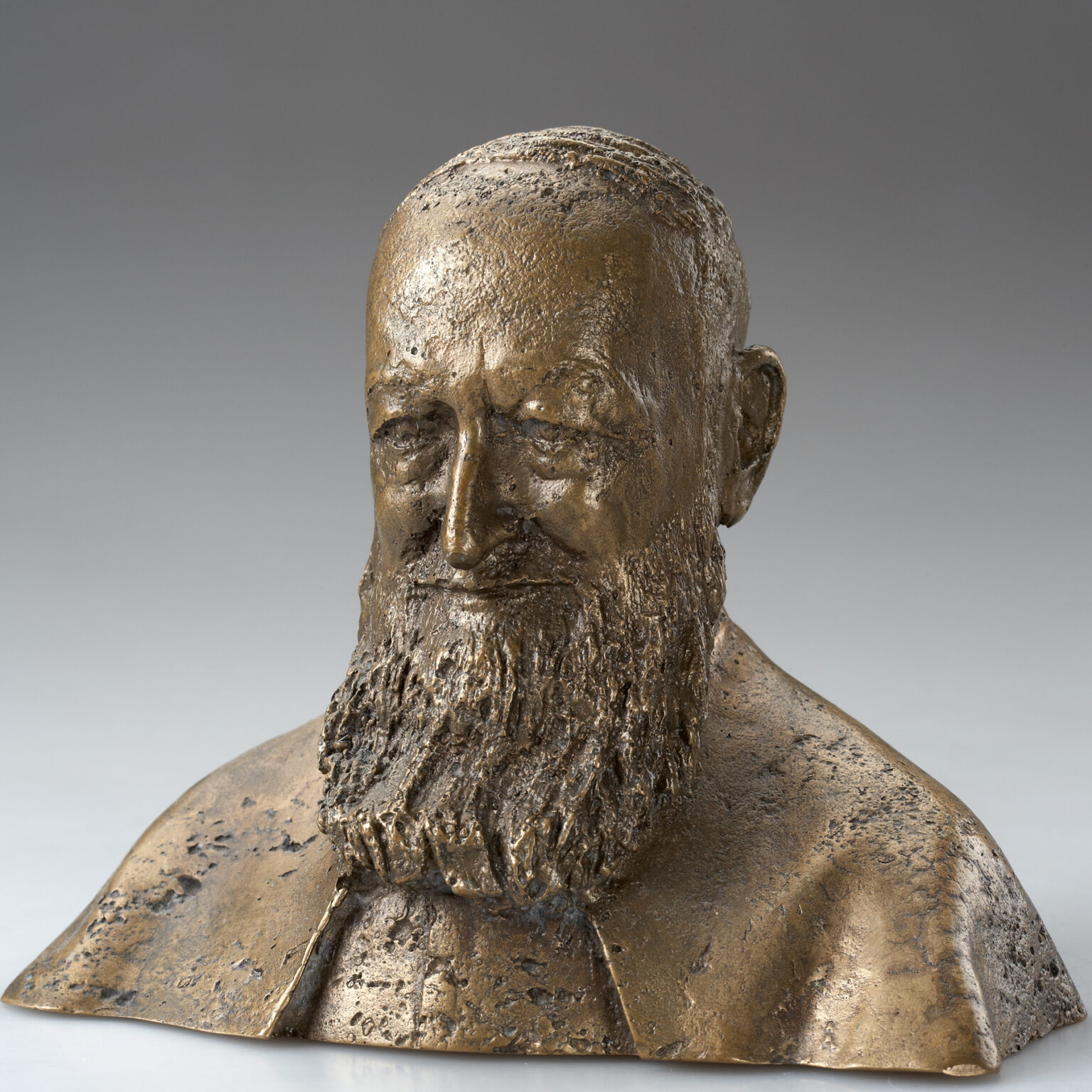
Photo: Focus Vallendar
But those who ask in this way are asking from the end point of development. At the beginning, there is the young Joseph Kentenich, who wants to live as a Christian, who even wants to become a priest, but who has drilled himself so much into the questions about the fundamental knowability of God that his entire faith begins to waver. In addition, there is the feeling of loneliness, because he cannot really make himself understood to anyone with his problems.
In addition, there is his irrepressible hunger for freedom, which has already made him experience the orphanage and school as torture. With his intellectual talent and his ability to think for himself, he embarrasses many of his teachers and professors. Tradition is not proof for him. He wants to find everything out for himself. It must make sense to him, then he can accept it. In all this turbulence of youth, in which he has many admirers but no friends, something remains balanced in his soul.
This is his love for the Blessed Mother. At the height of the crisis, a total surrender to her brings the solution. He can believe again. After his ordination to the priesthood in 1910, first in his teaching activity, later in his task as spiritual director, a psychological-pedagogical talent reveals itself, which gets on the track of life, even of the smallest emotions of life, and knows how to bring them to fruition. Little by little, the educational and faith school of Schoenstatt spirituality grows in great independence, although in constant dialogue with the current psychological and pedagogical discussions and doctrines. Its new accents in the image of God, man and community are nothing new in terms of content. (There can be no such thing in the Christian faith.) But the novel synthesis makes one sit up and take notice.
He has gone through many of the problems with which most of our contemporaries are tormented, and we ourselves probably also, and has found an answer from faith. That is what makes this answer so interesting. The hand on the pulse of time – the ear on the heart of God, that is how Father Joseph Kentenich himself characterized his work. That is why Schoenstatt spirituality is indeed cut out of the face of today.
A new type of Christianity
- In opposition to ideas that God is dead or can only be interpreted as an anonymous, impersonal power, he announces a God who is powerful in history, lovingly obliging, merciful, but also demanding, to whom man can respond with daring, trusting, active faith in Providence.
- In the face of the most diverse conceptions of man, he points to Mary as the image of the true man as God intended him to be.
- In the face of destructive tendencies and feelings about life, be it the feeling of being an interchangeable number, be it that one sees oneself merely as a “product of the environment”, he emphasizes individuality and freedom. His teaching of the “Personal Ideal” helps to find a personal center.
- His practical consequences, which he draws from the idea of the covenant that characterizes the whole OT and NT, upgrade man to the covenant partner of God and awaken the sense of responsibility.
- Being an instrument in the hands of God and the Blessed Mother leads to committed serenity and overcomes feelings of powerlessness and resignation.
- His emphasis on workday sanctity guards against sanctimony, religiously dressed-up sensationalism, and makes practical charity the touchstone of true piety.
- His practical tips for living out of the covenant of love also prove helpful in the relationship with one’s spouse, indeed in many forms of human coexistence, whether in business or politics. Keyword: Covenant Culture.
- His reform of the concept of obedience for religious leads to greater co-responsibility and solidarity.
- His emphasis on freedom leads to the novelty in canon law of a commitment to a religious community merely through an employment contract with a permanent right of termination for the individual.
- His appreciation of tension as a trigger for movement and growth leads to new, federative structures within the entire Schoenstatt Work, which he thus sees as a model for the Church of tomorrow.
- His constant search for the traces of God in the lives of individuals and in the history of the entire Schoenstatt Movement provides the indispensable continuity in these fast-moving times. One could extend this list at will, but the multitude of individual points would probably confuse more than clarify.
Two examples may illustrate something of the novelty
A woman who was baptized Protestant but grew up more or less without religion took conversion classes with a Schoenstatt priest. Her husband was a Schoenstatter. Approximately every three weeks, both came to the priest, then they told him about the interesting and beautiful things that had happened in the last time, but also about their problems that had arisen. Based on these concrete personal experiences, the Schoenstatt priest then worked with the couple to answer the question: What does God want to tell us through these events? And they rediscovered faith as a help in life in their respective situations. A personally free-form prayer in the Schoenstatt Shrine concluded the meeting. After a few months, the couple moved to Bavaria. How surprised both were when they asked for the conversion classes to continue in their new home and the elderly pastor there wanted catechism questions answered and also continued to have the conversion classes be catechism classes. Movement pedagogy, as it is customary in Schoenstatt, is based on the trust that someone who truly enters into God will also be led by the Holy Spirit in such a way that the essential questions of following Christ will arise as personal questions – corresponding to inner growth – and can then be answered.
At a Schoenstatt Managers’ Forum, a participant who had come for the first time expressed his astonishment: “If I had heard what my colleague presented today from a priest in a sermon on Sunday, it would have had no effect on me. But that in my profession, in order to optimize professional performance, one can have a personal ‘service meeting’ with God every day, that when reviewing the mail, one should have the question in the back of one’s mind: What does God want to tell me with this, that one can feel like an instrument for the realization of God’s plans and thereby relieve stress, that one can – to put it in a nutshell – connect the workday with God in this way, that is really exciting. I’m a little skeptical that it’s going to work out that way for me.”
With the abundance of new things that Father Kentenich has developed, no one can say that he has already understood everything, and even less that he has already put everything into practice. Several times I discovered Schoenstatt in a completely new way; in the measure in which new questions matured in me, I discovered the Founder as one who had already roamed this spiritual terrain before me and who could give useful orientation. Thus, based on my own experience, I would like to suggest that you reflect on a little Dachau verse of his:
than to generously strive according to our ideals.” (Heavenwards, #570)
Let us not be spiritual sweet tooth, who choose the most pleasant thing in the religious “department store offers”! Let us test the effectiveness and usefulness of the steps developed by him on our way to God! Then we are indeed the family of a reformer and founder of a new spirituality.
Thank you, Father Kentenich!
Today, when someone speaks on the telephone and the voice of the other person can be heard loud and clear, when in the farthest corner of our country one can receive a good television picture even without a “satellite dish”, when many people see the slim television towers day after day or at least on the weekends, they all probably do not think of Fritz Leonhardt.
If neighbors have found a counselor in a Schoenstatt mother, if a Schoenstatt family can always pass on a good tip in matters of education and one can see in their children that this is not only theory, but also practical skill, if a Schoenstatt priest preaches true to life, the others will probably hardly think of Father Kentenich. But we could thank him personally whenever we realize that we have been able to help someone through our know how. After all, besides ourselves and our efforts, we owe it to him that we have become the way we are – let us remain calmly in the natural order for the time being and not immediately attribute everything to the last, to the grace of God. In fact, we owe a lot to the founder of this new spirituality.
She has given us the monumental structure of our ascetical and educational system, which can be so perfectly adapted to the God-given uniqueness of each individual and community. She helped us find our personal and community ideals.
She has created all the branches of our family in accordance with the needs of our times and has implored and gained for them many and qualified vocations.
She was always there, despite the many times we failed, and gave us the courage again and again to reach out for the stars.”
18.10.1939, so-called “II Founding Document” = lecture on the occasion of Schoenstatt’s 25th anniversary.
Original: German. Translation: Maria Fischer @schoenstatt.org


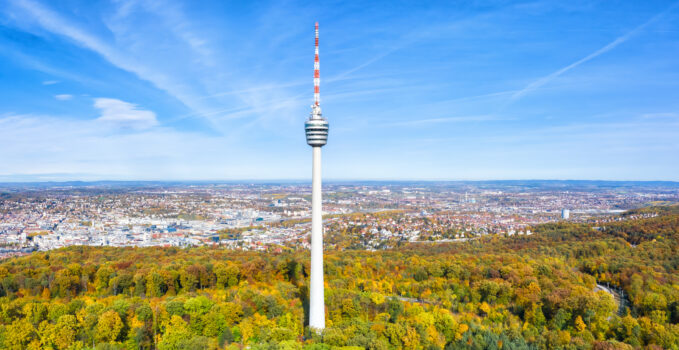
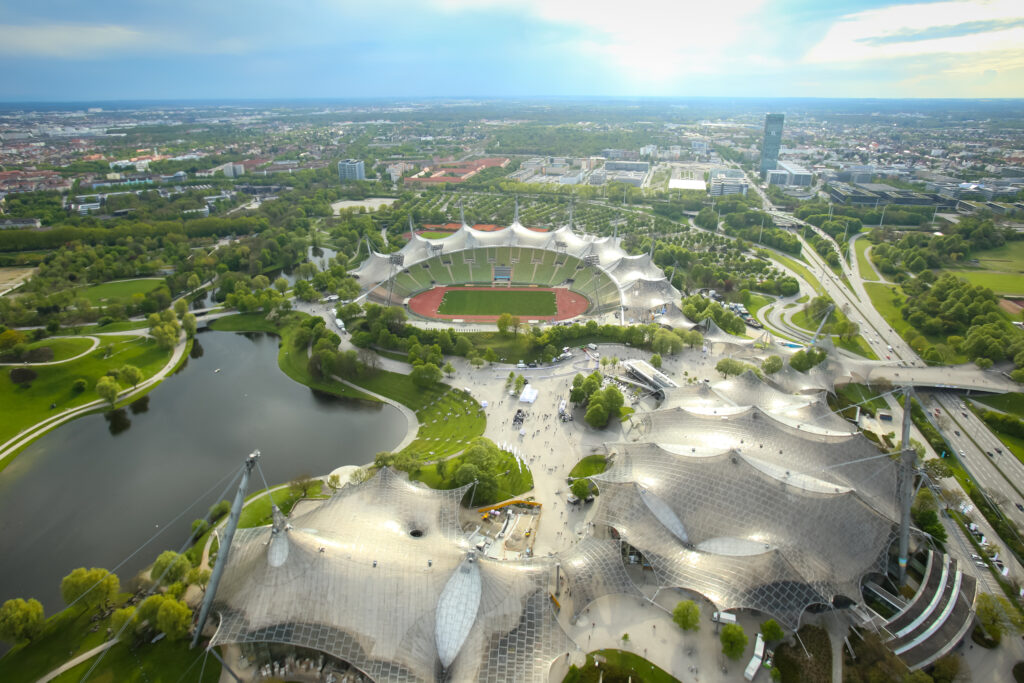
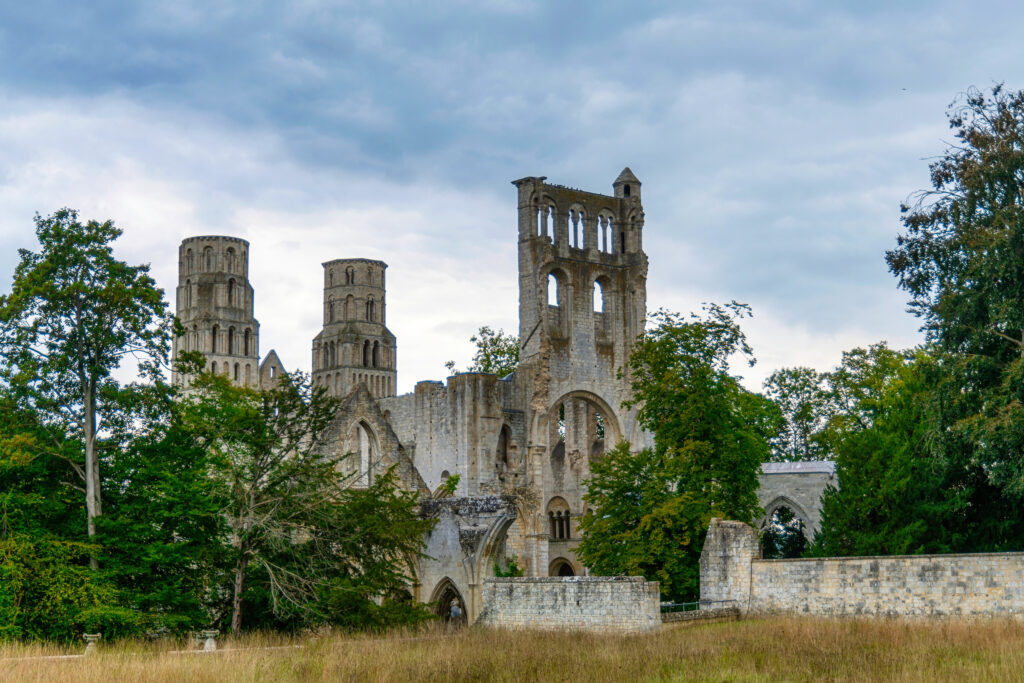
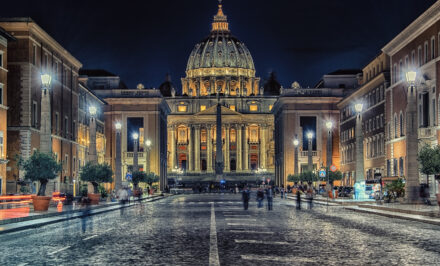
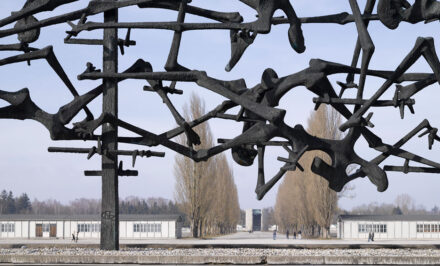










Muy buen articulo para reflexionar, mi construcción personal espiritual basado en la pedagogía que nos dejo PJK como método.
Que quiere decirme Dios con esto? Es el cimiento de crecimiento para abordar la fe practica en la divina providencia.
Gracias por el articulo.